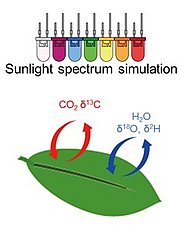Understanding the influence of daylight on plant functioning from leaf level to forest stands
2023 - 2026
Cooperazione FinanziamentoA stable isotope approach ¶
The light environment in forests is affected by climate change. However, it differs from other environmental factors, such as temperature and rainfall, whose change can be easily sensed by humans. Luckily, plants are good at detecting changes to both the quantity (amount) and quality (colour) of light. Light is able to regulate plant functioning, together with many other environmental factors. It is therefore of interest to know how a changing light environment could affect plant functioning and what mechanisms underlie these responses, especially when light interacts with other environmental factors. With the proposed research, we aim to: (1) ascertain the characteristics of the light environment of typical European forests; (2) better understand the combined effects of light and drought; and (2) illustrate how different single-colour regions of light and different combinations of colour regions with different light intensities affect plant functioning.

Stable isotopes have been widely used in ecophysiological studies of the gas-exchange process. Light can affect isotopic fractionations through its regulation of photosynthesis. A good example is that leaf carbon isotope ratio (δ13C) has been found to decrease progressively from the top of the canopy towards the forest floor. One might expect that both light quantity and quality are involved in leaf gas-exchange regulation by photosynthesis and stomatal properties, and that this regulation can be assessed by measuring triple stable isotope ratios (δ13C, δ18O and δ2H).
Here, we carry out experiments, involving both field observations and manipulation experiments, to assess the impact of the light environment on the functioning of trees with the help of two novel and powerful tools: chromatography-based leaf pigment composition analysis and triple stable isotope (carbon-oxygen-hydrogen) analysis during leaf carbon dioxide and water exchange. The proposed experiments enable investigation of the phenomenon of plant functional responses under different typical natural daylight conditions. More information can be found here: Stable isotope lab

